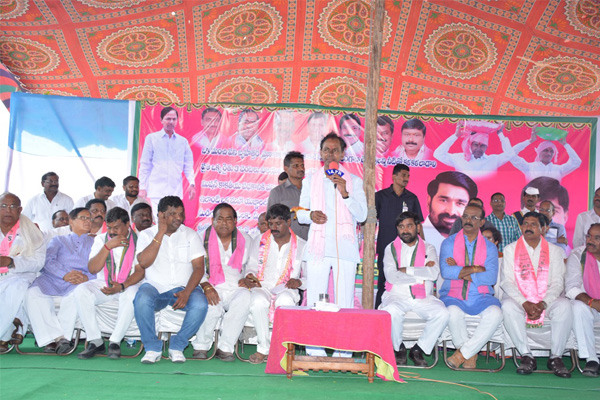
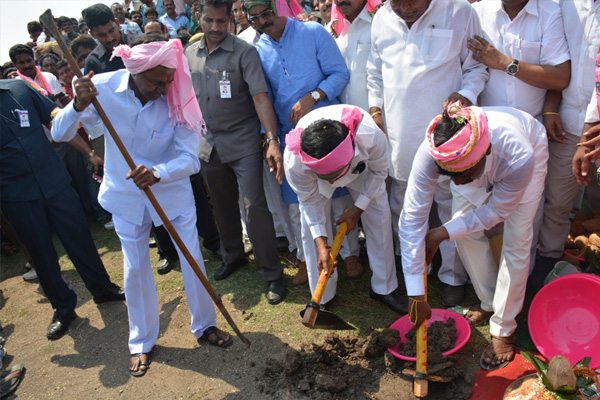
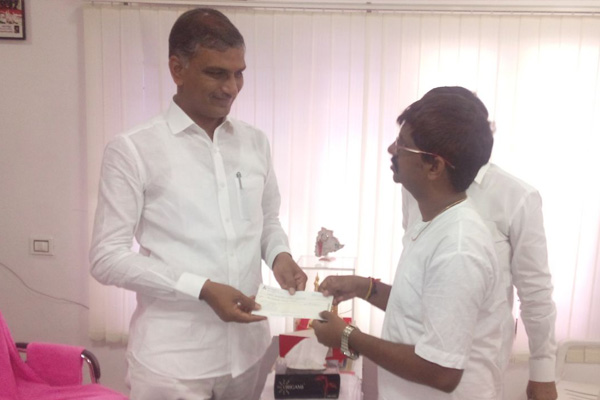
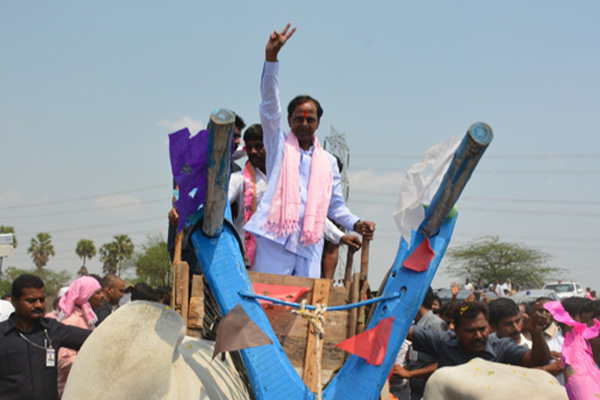
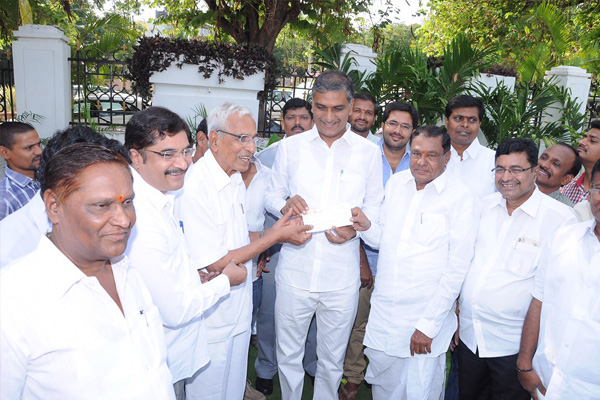
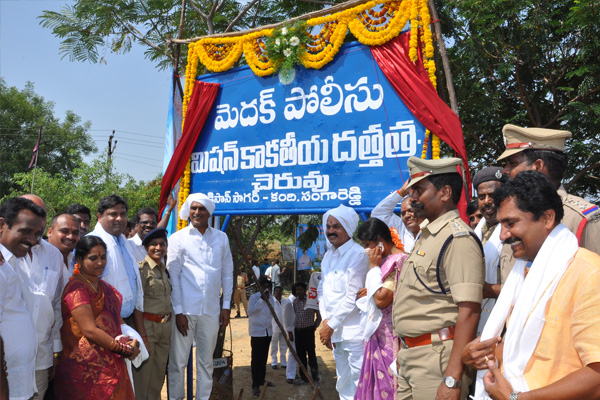
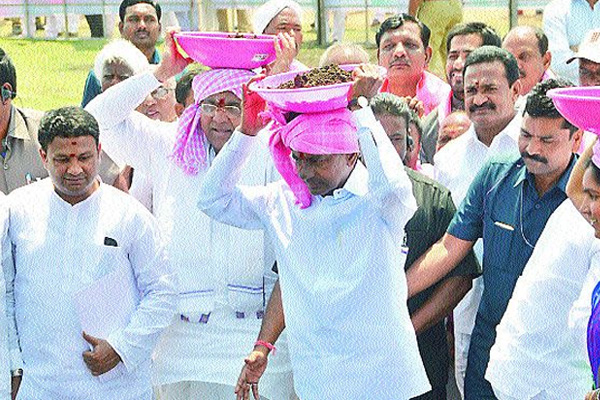
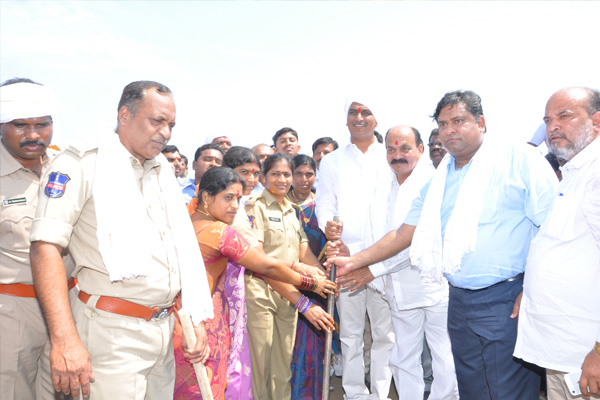
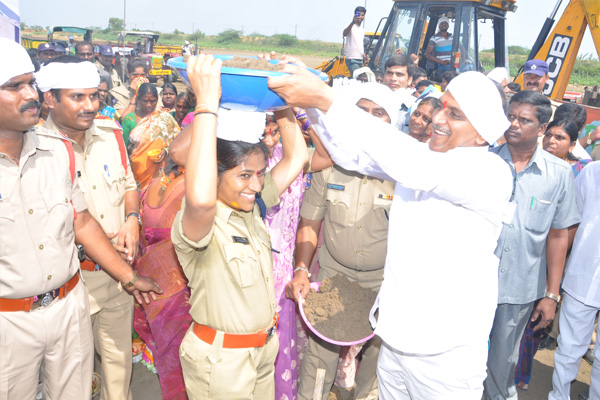
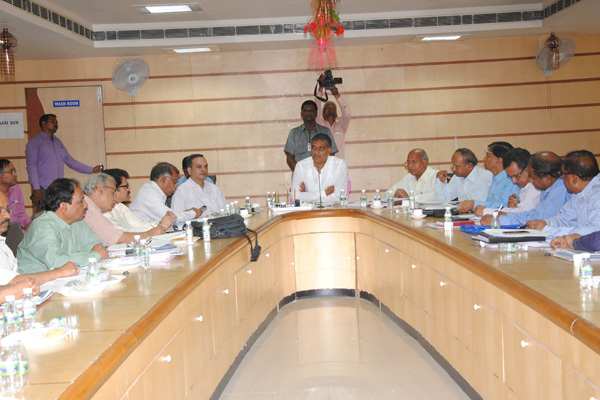
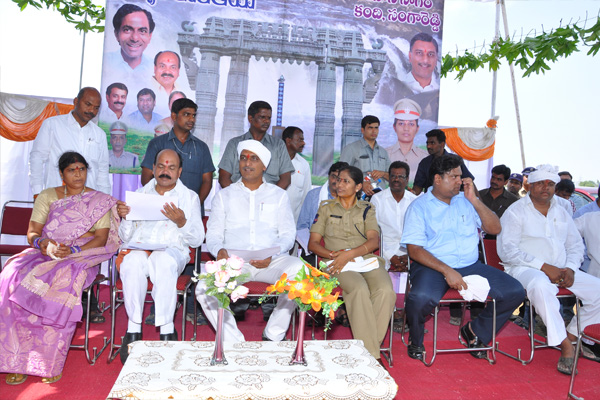

Mission Kakatiya is a major and noble program contemplated by the Government of Telangana not only to revive the neglected water bodies, but even to put them to optimum use to bring back the cultural and agricultural prosperity of the once resplendent Telangana.
Mission Kakatiya is a major and noble program contemplated by the Government of Telangana not only to revive the neglected water bodies, but even to put them to optimum use to bring back the cultural and agricultural prosperity of the once resplendent Telangana. The Government of Telangana has embarked on a noble mission of restoring all tanks by undertaking dredging, removal of encroachments and enriching the tans and, in turn, groundwater table.
Hon'ble Chief Minister Sri K Chandrashekar Rao’s vision is that Telagana’s throat should never go parched. The well-being of the State lies in its water resources. The Government is implementing a multipronged strategy to secure and preserve and rejuvenate the water bodies, leveraging the technology.
Mapping, survey of tanks and water bodies using GIS and Lidar Technology is being used for identifying the check dams on the rivers and also using the data for urban governance and for all water related schemes.
Tanks and ponds that once dotted every village in Telangana and contributed their mite to the prosperity have now disappeared. There is no trace at many a place that a tank existed.
Over the years, the tanks were destroyed and water resources were dried up. Prosperity has now turned into poverty. Telangana's heart is bleeding. Water evaporated; Tears in the farmers' eyes dried up. Famine, migration, parched throats and hungry stomachs smacked the once lush-green Telangana.
The current pathetic state of shattered hopes and smashed tanks stands as epitaphs of the past glory and grandeur of Telangana. Tanks and ponds stood as statements of prosperity, affluence and culture of Telangana. They weren't mere water bodies catering to the irrigation and other needs of people. They were epitomes of Telangana culture and history.
The magnificent history of Telangana tanks flowed like a steady stream for centuries.
The Government with an iron will and steel resolve has come forth to ensure the implementation of "Mana Ooru - Mana Cheruvu" program as part of the Mission Kakatiya thereby proving a point that it's an administration of deeds, and not words.
Growth of agriculture, allied economic activity and financial self-reliance of villages was the vision of Kakatiya rulers who had taken the initiative for creating very large tanks. The Qutub Shahis and Asaf Jahis who ruled the place eventually too continued the great work of Kakatiyas.
Precisely with a view to restoring the faded grandeur, the Chief Minister Mr K Chandrasekhar Rao christened the project as Mission Kakatiya.
He has given a clarion call to farmers and farm labourers who would be the direct beneficiaries of the program to participate in it in large numbers to make it successful.
For deepening the silted up tanks, the tank beds have to be desilted and dredged and the same could be unloaded and spread in the farm fields, for it was the most fertile slush.
Farmers used to carry such sludge in bullock-carts into their farm fields, but such scenes are becoming rare or have almost disappeared.
The tanks under the Krishna and the Godavari had an assured water of 265 TMC feet (thousand million cubic feet), but only 90 TMC feet was being utilised as the tanks were silted up.
The Government has had a survey conducted on the tanks and enlisted 46,531 tanks across the State. Of them, about 4,000 were in alignment with one another. There was 25 lakh (2.5 million) acres of arable land under them. The Government has decided to revive 9,300 tanks every year as part of Mission Kakatiya.
The mud can also be used by nurseries and the horticulture department for raising saplings.
The Ramappa, Pakala and Laknavaram tanks were created in the 13th Century itself under the rule of Kakatiya dynasty. It's not just the Kakatiyas, but their satraps and representative rulers too gave their two cents to dig the tanks thereby ensuring that Telangana flourished.
The tanks were neglected during the 14th and 15th centuries owing to the unforeseen circumstances and the wars , but they were rejuvenated by the Qutub Shahis who began their rule in 16th century.
Hussain Sagar was built during Qutub Shahis. The Nizams who took over the reins of focused on water resources. The Irrigation Development Board was established in 1868 itself and they built the large drinking water tanks of Osman Sagar, Himayath Sagar, Palair tank, Pochampadu, Nizam Sagar, Wyra, Dindi, Pendri-Pakhal, Manair, Koyil Sagar and other projects and completed by 1940. The irrigation command area went up from 3,44,592 acres in 1920 to 8,43,090 acres in 1945 under the Nizam rule.
Unfortunately, instead of progress, Telangana witnessed backwardness over the years after India became independent.
Enugu Veeraswamy's treatise had a mention of multiple lakes around Hyderabad and how the horticulture and vegetable crops thrived around them. Several places in the City are still called bagh, bowli and kunta.
Now there are no traces of the gardens, wells, tanks or ponds. Veera Swamy made special mention on how farmers used to reap a bumper paddy crop. By this example, it is proven beyond doubt that paddy crops thrived in Telangana from times immemorial and the derisive remarks of the cronies of migrant rulers had no strength.
Now, the mission is to cover the Telangana landscape with tanks and ponds that once made this land bloom. While over 11 lakh hectares of land was irrigated by tanks in Telangana in the 1950s, the area covered by them had plummeted to 5,42,620 hectares now. This clearly defines the neglect and speaks volumes about the misrule.
After the formation of Telangana State, the Government has embarked on "Mission Telangana" only to breathe new life into the region and bring it back from the brink.
Take for instance, the tanks in greater Hyderabad as a case in point.
One would easily understand how pathetic they turned into.
There are 2,857 tanks in HMDA (Hyderabad Metropolitan Development Authority) area and 169 in Greater Hyderabad Municipal Corporation limits.
There are 2,402 tanks outside the periphery of Outer Ring Road and 455 within that. This speaks volumes of the potential of water resources Telangana has.
There are 26 tanks in Hyderabad, 133 in Ranga Reddy and 296 in Medak districts within the perimeter of Outer Ring Road. The list of tanks encroached upon by land sharks is too long to mention. The Ramantha cheruvu, Vadlakunta, Kotha Cheruvu and Bandla Kunta in Seri Lingampally have almost disappeared due to land grabbing.
Shyamalakunta, Yousufguda tank, and Boggulakunta in Khairathabad mandal, Tadla kunta, Barrenakala kunta in Sarronagar mandal and Bathukamma kunta in Amberpet and so on have all been occupied.
Revival of tanks is like reviving of the glory of Telangana. The Telangana State Government earmarked Rs. 2,000 crore in its first-ever budget presented on November 5, 2014 in the State Assembly for the reviving the minor irrigation sources and tanks. Now the tanks need to be revived, sluices need to be cleared, silt has to be transported to farm lands, creation of feeder channels, tanks have to be relieved from the clutches of land sharks.
Mission Kakatiya is a noble cause.
It wants to rephrase the age-old adage of "Water water everywhere, but not a drop to drink," and rewrite the cultural richness and heritage of Telangana with elixir.
A treatise, Kashi Yatra, authored by Enugu Veeraswamy, indeed brings to light the days of yore of Telangana and how the State thrived long ago.





















